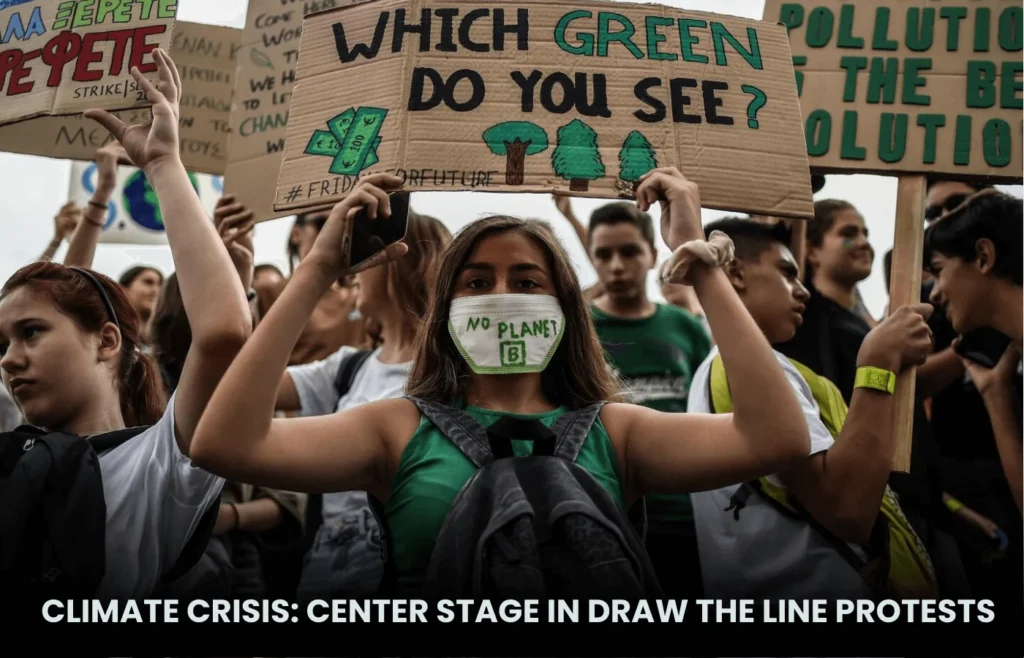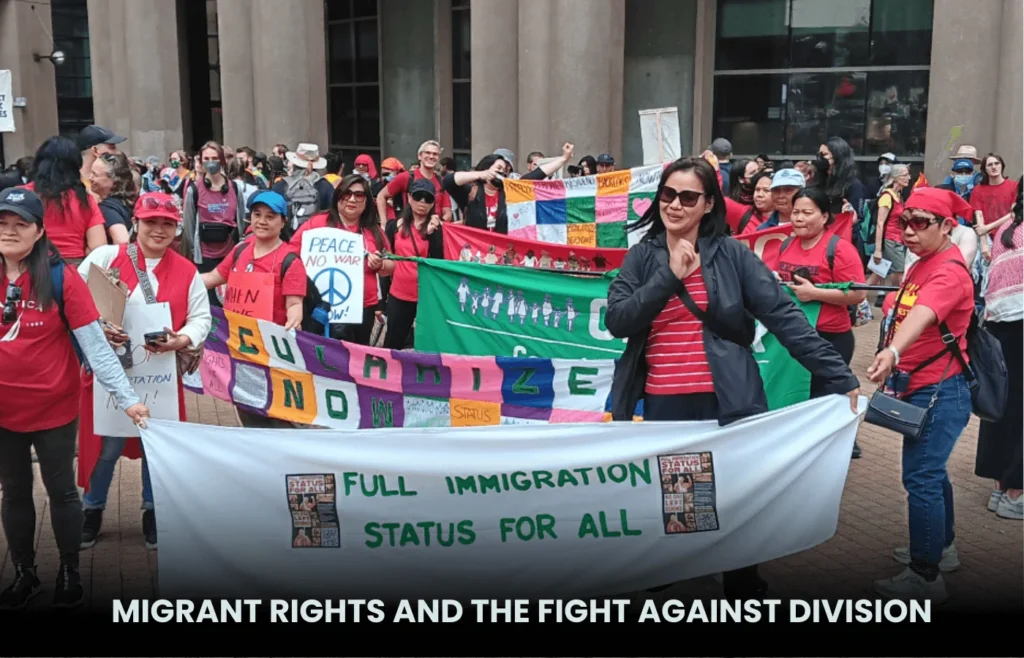Thousands Rally in Draw the Line Protests Canada for Climate and Rights
In the heart of Toronto, under a crisp autumn sky, nearly 2,000 voices rose in unison, their chants echoing off skyscrapers and filling the streets with a sense of urgency that’s impossible to ignore. This wasn’t just another demonstration—it was a powerful call to action, where everyday Canadians from all walks of life came together to demand a shift in priorities from their government.
As part of a nationwide wave of rallies known as the Draw the Line protests Canada, participants marched through downtown, carrying signs that highlighted interconnected struggles: from the escalating climate emergency to the rights of Indigenous peoples, migrants, and workers. What started as a local gathering quickly became a symbol of collective resistance, reminding us that when issues like environmental destruction and social injustice collide, people won’t stay silent.
Picture this: families with children in strollers, elders sharing stories of past fights, and young activists wielding megaphones, all united by a shared fear for the future. I’ve covered stories like this before, and there’s something electric about witnessing such raw determination. These protests aren’t born out of fleeting anger; they’re rooted in deep-seated concerns over policies that seem to favor big industry and military spending over human lives and the planet. As the new Liberal government under Prime Minister Mark Carney prepares its fall budget, demonstrators are making it clear: it’s time to prioritize people over profits.
The Spark Behind the Draw the Line Protests Canada
To understand the momentum behind the Draw the Line protests Canada, we have to look at the coalition that organized them. A group of 14 partner organizations, representing movements for migrant justice, economic fairness, Indigenous sovereignty, peace efforts, and climate action, came together to form what they’re calling a “common front.” This isn’t a loose alliance—it’s a strategic union designed to amplify voices that are often siloed. Organizers point to the Liberal agenda as the catalyst, accusing it of pushing forward projects that harm the environment, arm conflicts abroad, and blame migrants for domestic woes.
Syed Hussan, a key organizer and spokesperson for the Migrant Rights Network, captured the crowd’s sentiment perfectly during a pre-march speech in Sankofa Square. “We’re building this common front because the climate catastrophe affects us all,” he said, his words cutting through the chatter. “The world teeters on the brink of war with massive armaments piling up everywhere. We have to take a stand right here in Canada.” His message resonated deeply, drawing nods and cheers from the diverse crowd. Hussan’s background in advocating for migrant rights adds weight to his words; he’s been on the front lines for years, fighting for those often overlooked in policy debates.
These rallies didn’t happen in isolation. Similar events unfolded across Canada—in Ottawa, Montreal, Vancouver, and beyond—as well as in other countries as part of a global day of action against climate change and inequality. This interconnectedness highlights how local issues tie into worldwide challenges, from rising sea levels displacing communities to economic policies that widen the gap between rich and poor.
Climate Crisis Takes Center Stage in Draw the Line Protests Canada
At the core of the Draw the Line protests Canada lies an unyielding focus on the climate emergency. Protesters are alarmed by the Liberal government’s support for new fossil fuel initiatives, including fast-tracking a liquefied natural gas (LNG) project. Environmental icon David Suzuki, who joined the Toronto rally not as a celebrity but as a concerned grandfather, shared his frustration openly. “We’re in a real crisis,” he told the crowd. “Our Prime Minister knows the threats of climate change inside out, yet he’s still backing pipelines and LNG. It’s putting the economy ahead of humanity’s survival.”

Suzuki’s presence wasn’t just symbolic. With decades of experience in environmental advocacy, he brings a level of expertise that’s hard to dismiss. He recounted stories from his career, like witnessing the devastating impacts of deforestation on Indigenous lands and marine ecosystems. “I’ve seen glaciers retreat and species vanish,” he said. “If we don’t act now, what world are we leaving for our grandkids?” His words echo broader concerns: Canada’s emissions continue to climb despite international commitments, and projects like the Trans Mountain pipeline expansion have long been flashpoints for conflict.
One particularly contentious piece of legislation drawing fire is Bill C-5. Pitched as a way to streamline approvals for major projects and bolster the economy against U.S. tariffs, critics argue it risks undermining environmental safeguards and Indigenous consultations. Indigenous and green groups fear that speeding up these processes could lead to irreversible damage, sidestepping crucial protections. Prime Minister Carney defended the bill during a speech in Hamilton, emphasizing engagement with First Nations before projects advance. But for many at the rally, that’s not enough—they want a full halt to anything that accelerates fossil fuel dependency.
To put this in perspective, let’s consider the real-world stakes. Climate change isn’t an abstract threat; it’s altering lives right now. In Canada’s North, Indigenous communities face melting permafrost that’s destabilizing homes and hunting grounds. Floods and wildfires, intensified by warmer temperatures, have displaced thousands in recent years. Protesters shared personal tales: one woman from British Columbia spoke of losing her family farm to a blaze, blaming government inaction on emissions reductions. These stories aren’t anomalies—they’re becoming the norm, underscoring why the Draw the Line protests Canada are so vital.
Indigenous Rights: A Pillar of the Movement
Interwoven with climate concerns are calls for stronger Indigenous rights, a theme that’s been central to Canadian activism for generations. The Draw the Line protests Canada build on legacies like the Idle No More movement, which mobilized thousands against policies threatening treaty rights and lands. Today, demonstrators worry that fast-tracked projects under Bill C-5 could erode these rights further, allowing development without meaningful consent.
Indigenous leaders at the Toronto march highlighted how environmental degradation disproportionately affects their communities. “Our lands are sacred, and they’re being plundered for profit,” one elder shared, her voice steady but passionate. She referenced ongoing court challenges by First Nations against similar initiatives, noting that while the government promises dialogue, actions speak louder. Carney’s appointment of a former Trans Mountain CEO to head a new major projects office only fueled suspicions that economic gains trump sovereignty.
Expanding on this, consider the historical context. For over a century, Indigenous peoples in Canada have fought against assimilationist policies, land grabs, and resource extraction that ignores their stewardship. Recent reports detail how climate impacts exacerbate these injustices, from contaminated water sources to lost traditional food systems. The protests serve as a reminder that true reconciliation requires more than words—it demands policy shifts that honor treaties and protect the environment.
In Ottawa, where crowds gathered near Parliament Hill, the message was amplified by a striking act: protesters painted a massive red-and-white mural on Wellington Street, directly in front of Carney’s office. It symbolized their demand for visibility and change. Police reported two arrests for mischief and closed the street for cleanup, but the image went viral on social media, sparking conversations nationwide.
Migrant Rights and the Fight Against Division
Another key thread in the Draw the Line protests Canada is advocacy for migrants and refugees, who organizers say are being scapegoated amid economic pressures. Bill C-2, introduced in response to U.S. President Donald Trump’s tariff threats, grants authorities expanded powers to search mail, access personal data, and halt immigration applications. Critics label it “anti-immigrant,” arguing it aligns Canada’s system too closely with restrictive U.S. policies.
Syed Hussan addressed this head-on: “This bill attacks immigrants and refugees—it’s a distraction tactic to divide us.” He emphasized unity: “It’s not immigrants versus Indigenous people, or climate versus jobs. We’re all in this together.” His organization, the Migrant Rights Network, has documented how such laws heighten vulnerability for newcomers, from farm workers facing exploitation to asylum seekers navigating bureaucracy.

Canada has long prided itself on welcoming immigrants, but recent shifts show a souring mood. Polls indicate growing concerns over housing and job competition, yet experts argue these stem from policy failures, not migration itself. Protesters shared heart-wrenching stories: a migrant worker from Mexico described grueling conditions in agriculture, worsened by climate-driven crop failures back home. These narratives humanize the debate, showing how global warming and migration intersect—displaced people fleeing disasters only to face barriers here.
The federal public safety minister has signaled openness to amendments during committee reviews, but for rally-goers, that’s cold comfort. They demand a complete rethink, one that views migrants as contributors, not threats.
Anti-War Activism and Calls for Peace
Palestinian solidarity emerged as a prominent issue during the Draw the Line protests Canada, especially following a UN Human Rights Council report concluding Israel is committing genocide in Gaza—a claim Israel rejects. Organizers like Omar Elkhatib from the Palestinian Youth Movement urged Canada to impose a full arms embargo on Israel, extending beyond the current restrictions on weapons usable in Gaza.
“We need justice for all oppressed peoples,” Elkhatib told the crowd, his call met with applause. Canada’s recent sharper tone on Israel’s actions, including plans to recognize Palestinian statehood at the UN General Assembly, offers some hope. Ambassador Bob Rae, in a recent interview, argued that a Palestinian state could enhance Israel’s security. Yet, protesters want more: an end to military aid that fuels conflict.
This ties into broader anti-war sentiments, with demonstrators criticizing the Liberal government’s billions in military spending while eyeing public service cuts. “Why arm wars abroad when our own communities suffer?” one sign read. In a world on edge, these protests highlight how domestic budgets reflect global priorities.
Economic Justice: Balancing the Budget on People’s Backs?
Looming over all this is the fall budget, where the Liberal government promises significant cuts to federal programs amid rising military expenditures. Protesters see this as a betrayal, especially as inequality grows. Interim NDP leader Don Davies, who joined the Ottawa rally, put it bluntly: “These decisions by elites are ruining our country. Social, economic, climate, Indigenous, migrant, and global justice are all linked—and enough is enough.”
Davies’ involvement adds political heft, signaling cross-party support for the cause. Economic experts warn that austerity measures could deepen poverty, particularly for vulnerable groups. Pair this with climate costs—think billions in disaster recovery—and the math doesn’t add up for many Canadians.
To illustrate, consider a worker from Toronto’s service sector who attended the march. “I’m barely making ends meet with rising rents and food prices,” she said. “Meanwhile, the government funds pipelines and wars. Where’s the justice?” Her story mirrors national trends: income gaps widen as climate events disrupt jobs in agriculture and tourism.
The Broader Impact and What’s Next
The Draw the Line protests Canada aren’t just a one-off event—they’re a movement gaining traction. With similar actions worldwide, they’re pressuring governments to rethink priorities. In Canada, as the budget approaches, these voices could influence policy tweaks, like adjustments to Bill C-2 or reevaluations of LNG projects.
For readers, this is a call to engage: share these stories, contact representatives, or join local groups. The coalition’s website offers ways to get involved, from petitions to upcoming events. As Hussan said, “We will not be divided.”
In reflecting on the day, it’s clear these protests embody hope amid crisis. By linking climate action with rights and peace, they’re charting a path forward. Whether the Liberal government listens remains to be seen, but one thing’s certain: the people have drawn their line.


